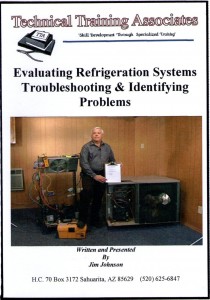Efficiently heating and cooling a building of this size has always been a challenge for facility managers as they supervise energy-intensive hvac systems amidst skyrocketing energy costs and ongoing maintenance requirements. As the chief engineer for the Washington Mutual Tower, Jeff Kasowski wanted to rein these costs in but his options were limited.

Vibration + cavitation = frustration
The existing hvac system in the Washington Mutual Tower consists of two large centrifugal pumps, a chilled water pump, and a condenser water pump that circulate water for 33 floors of the building. A thermostat, control valve, and heat exchanger use the chilled water to maintain a comfortable temperature on each floor, while warm water leaving the floor's heat exchanger is circulated back down to the chiller and recooled.In the tower, water flow was regulated through the chiller by a hand valve to maintain a constant pressure. This system resulted in several problems.
Over time, manual throttling and fixed valve setpoints on both the chilled water and condenser pumps resulted in significant amounts of wasted electricity. Vibration and cavitation in the pumps generated high maintenance costs. Electronic "soft start" equipment was required to mitigate start-up spikes in the pump motors.
In addition, the pump motors caused overheating and degradation of motor insulation, as well as voltage sags that could disrupt sensitive electronic equipment in the building.
"In looking for a solution, we wanted one that would save energy, improve process control, and reduce maintenance costs. After considering several different power transmission options, including vfd's, we decided to test a new magnetic asd technology that uses powerful, rare-earth magnets to transmit torque from a motor to a load," said Kasowski.
Immediate results
Manufactured by MagnaDrive (Seattle), the asd operates on the principle of magnetic induction and consists of two independent components that have no physical contact. A precision rotor assembly containing high-energy permanent magnets is mounted on the load shaft, while a conductor assembly with copper rings is connected to the motor shaft. Relative motion between the magnets and copper rings creates a magnetic field that transmits torque through the air gap between the asd's components.Varying the width of the gap changes the coupling force, producing a controlled and infinitely variable output speed. Unlike vfd's, the MagnaDrive asd requires no external power source, transfers torque without vibration, requires no specially trained technicians to maintain, creates no electronic harmonics, and is designed to last at least 30 years.
"We installed two magnetic asd's in the Washington Mutual Tower's hvac system - one on the 125-hp, 1,800-rpm motor running the centrifugal water pump and one on the 75-hp, 1,800-rpm motor running a centrifugal condenser pump. The results were immediate, and the benefits were long term," Kasowski noted.
66% demand reduction
"The first thing we noticed was the noise level - cavitation noise we lived with for 10 years disappeared as soon as we started the asd. We also no longer have to replace couplings annually and deal with aligning pumps and motors. And for the first time, the control system was programmed to allow precise control of flow rates, eliminating the use of control valves altogether," stated Kasowski.Beyond the day-to-day maintenance efficiencies, another key benefit of using the magnetic asd was the potential for significant energy savings. The asd's produced an immediate 66% demand reduction on the condenser pump motor and a 31% reduction on the chilled water pump motor.
In the moderate climate of Seattle, Kasowski and his team operate the hvac system for 8 hrs/day approximately 100 days/yr, with a realized savings of 36,000 kWh annually - enough to power four homes for a year. Had the building been located in a harsher climate, the new system running continuously throughout the year could save up to an estimated 394,200 kWh annually - enough to power 45 homes.ES









